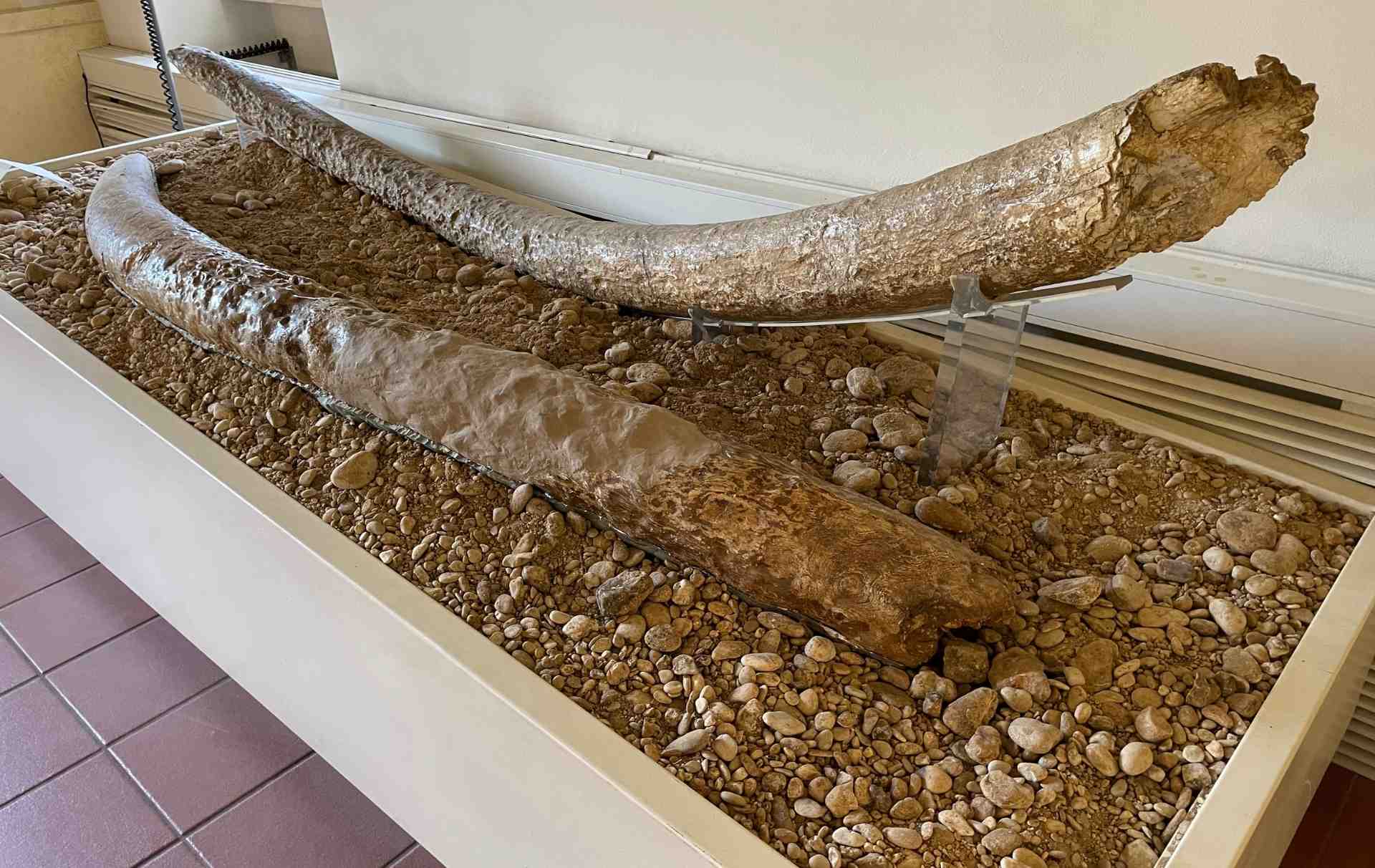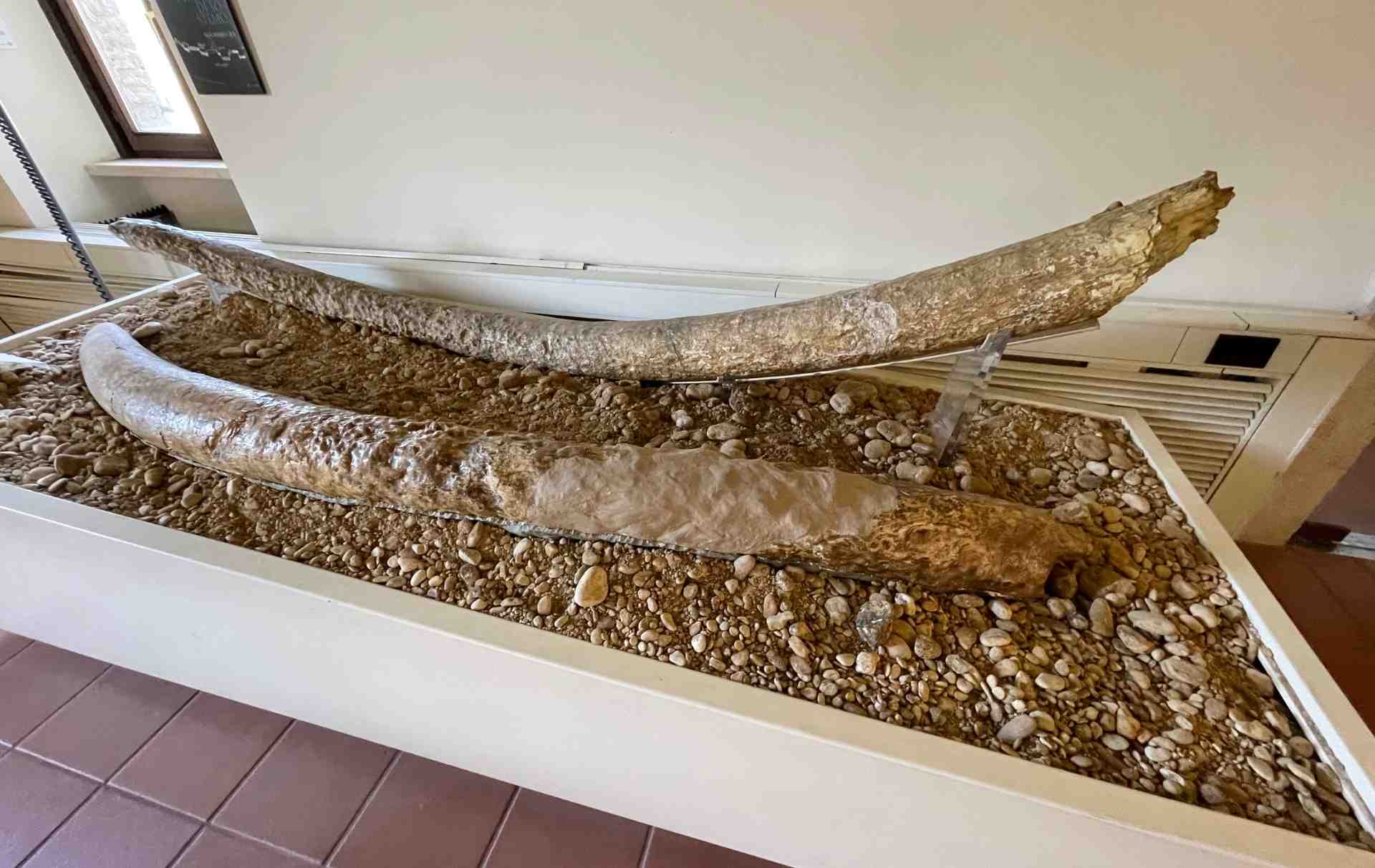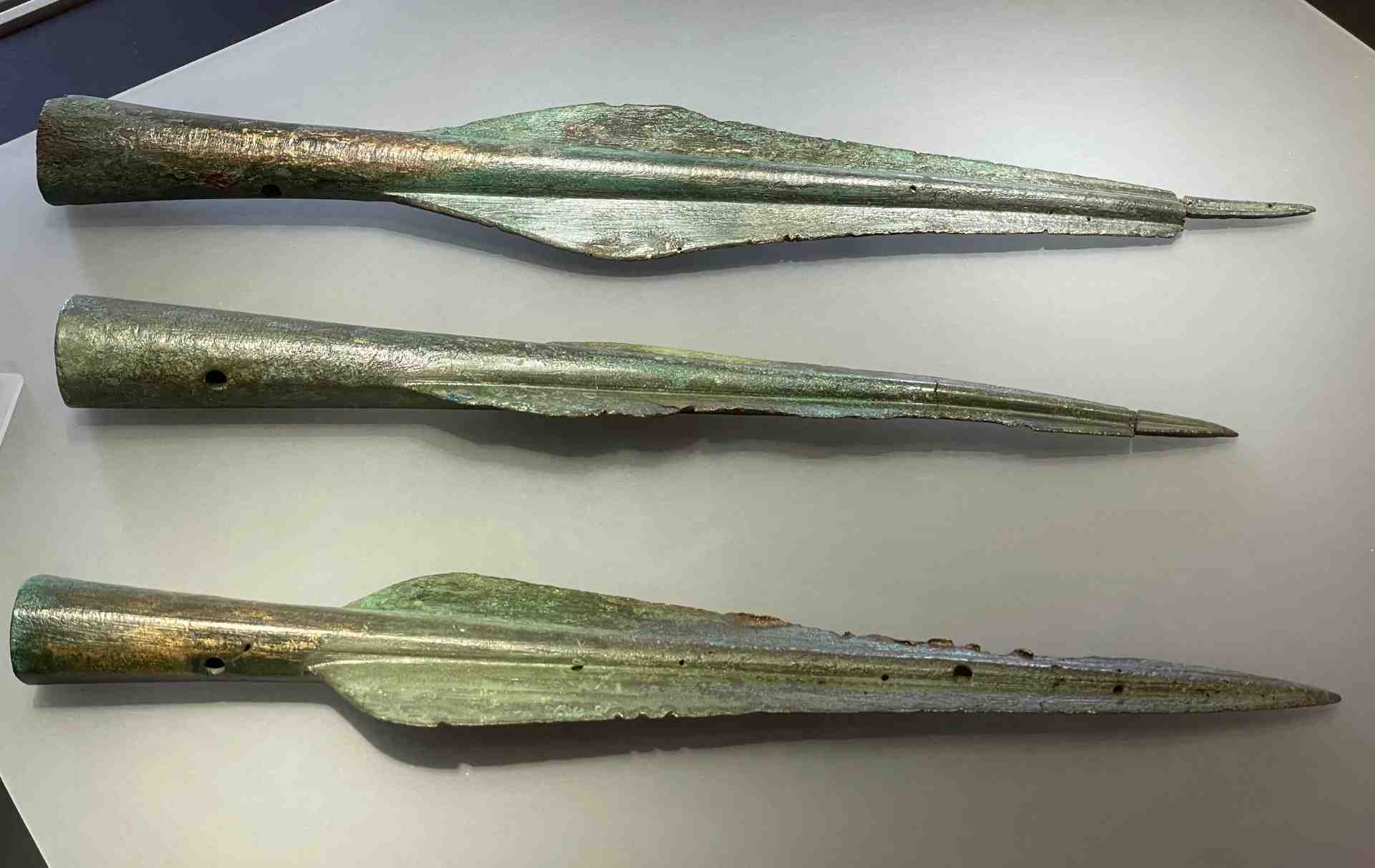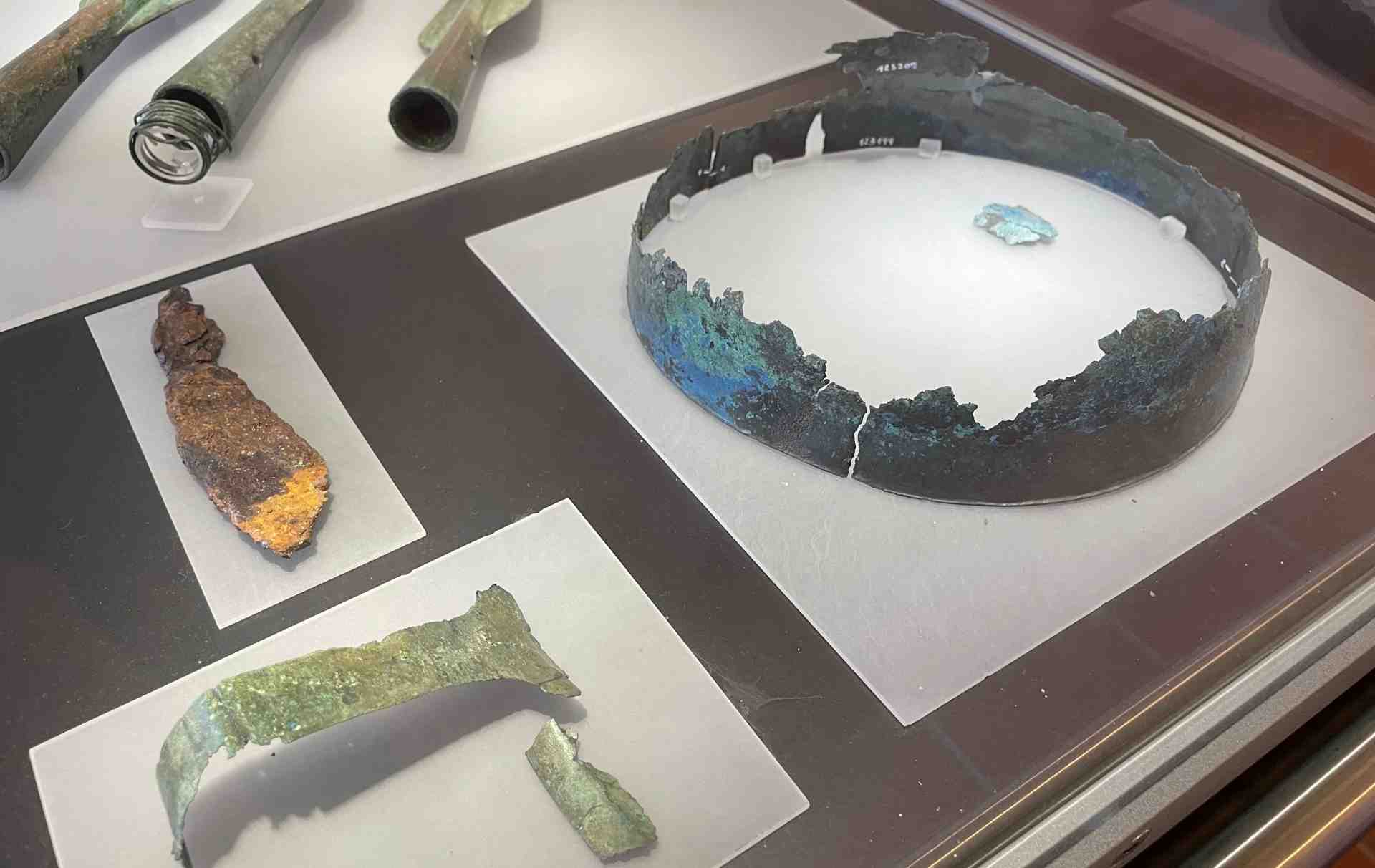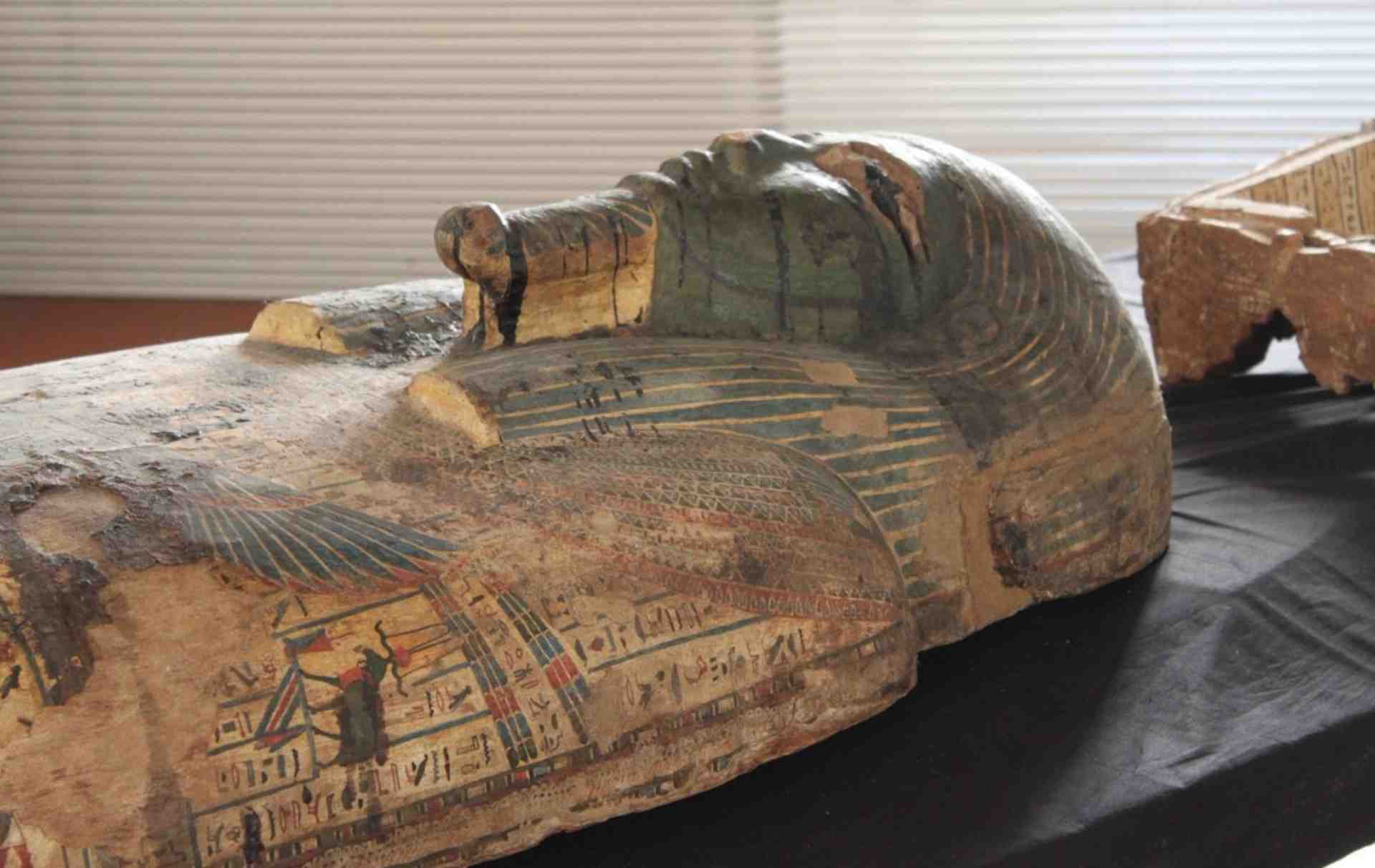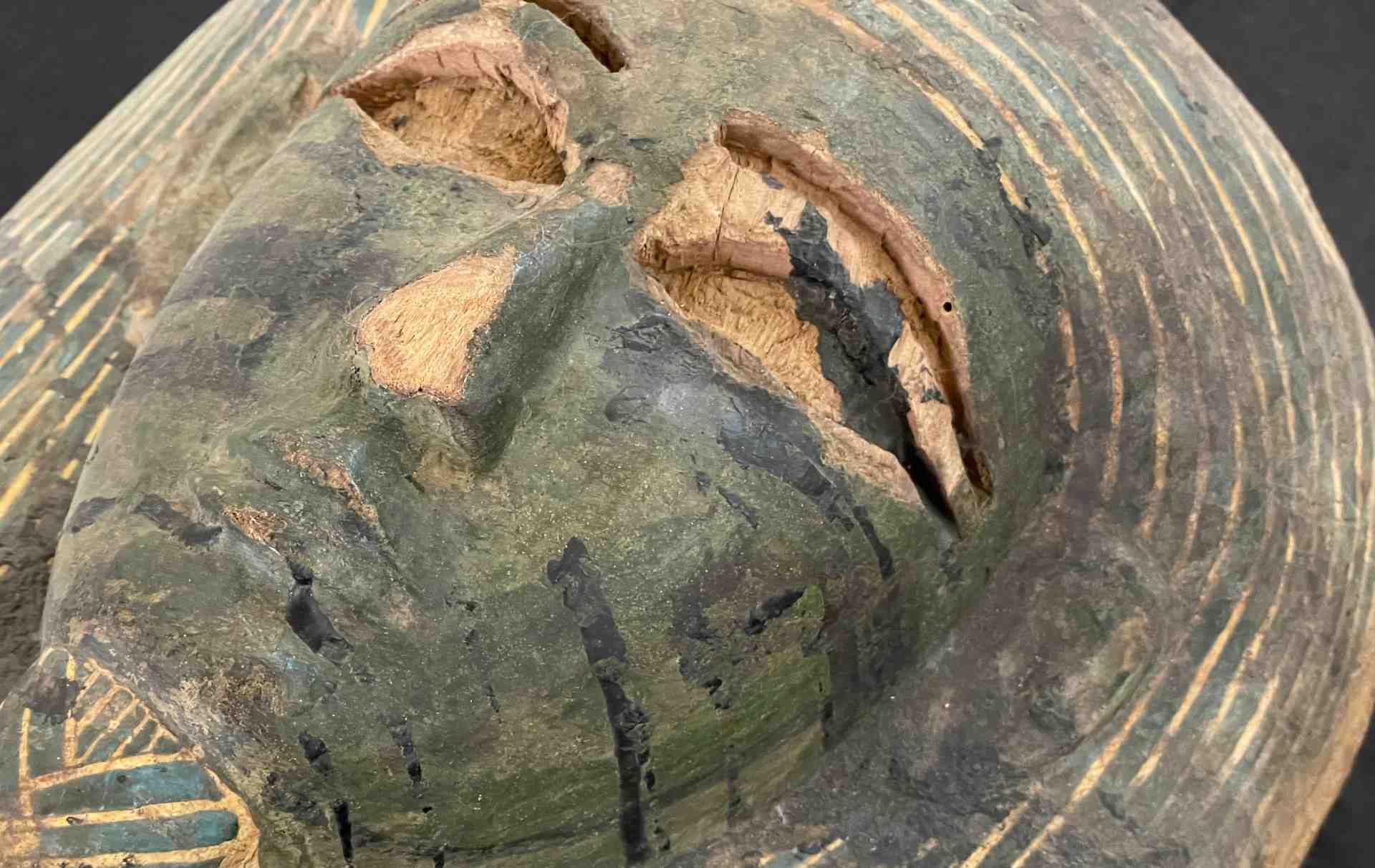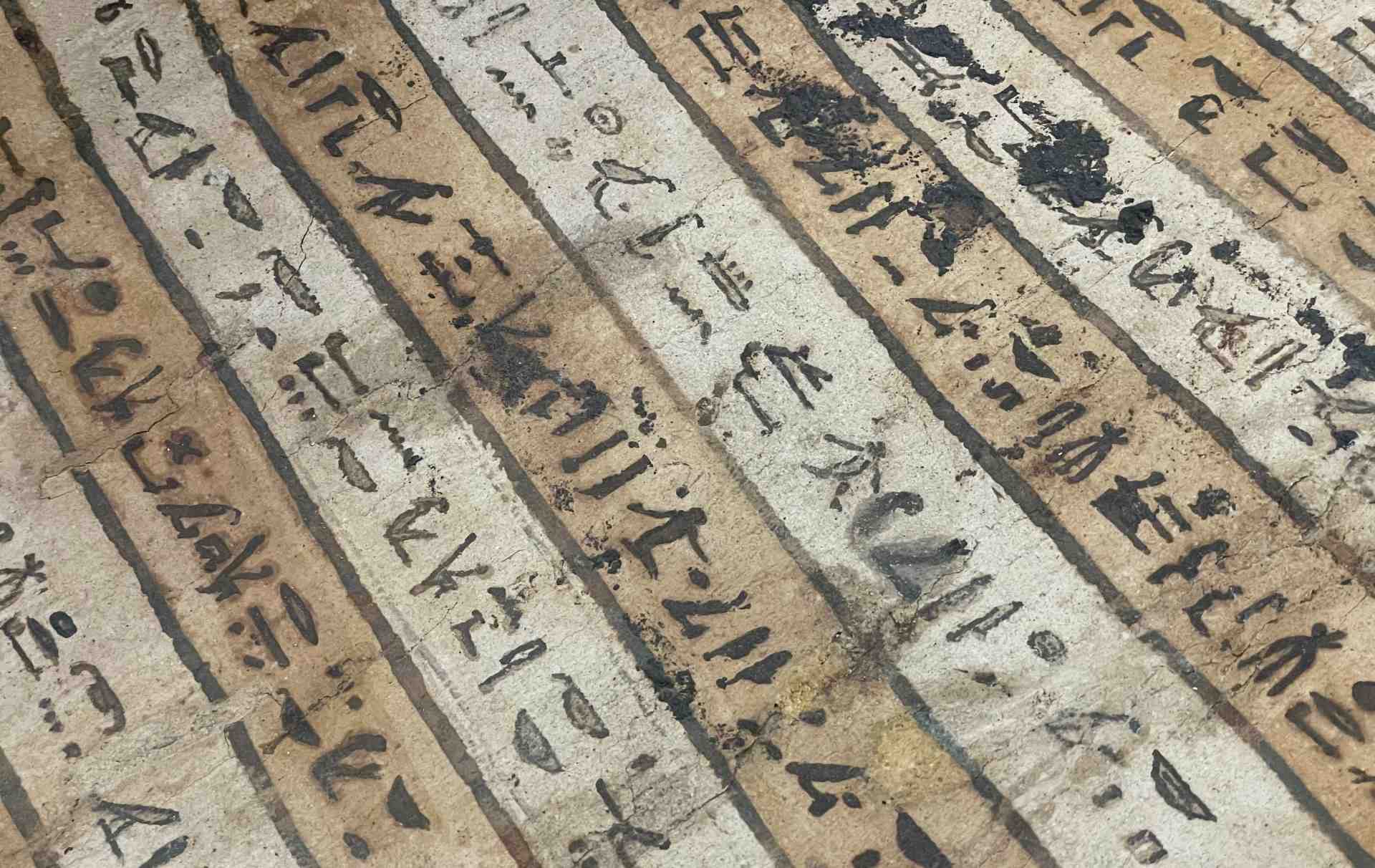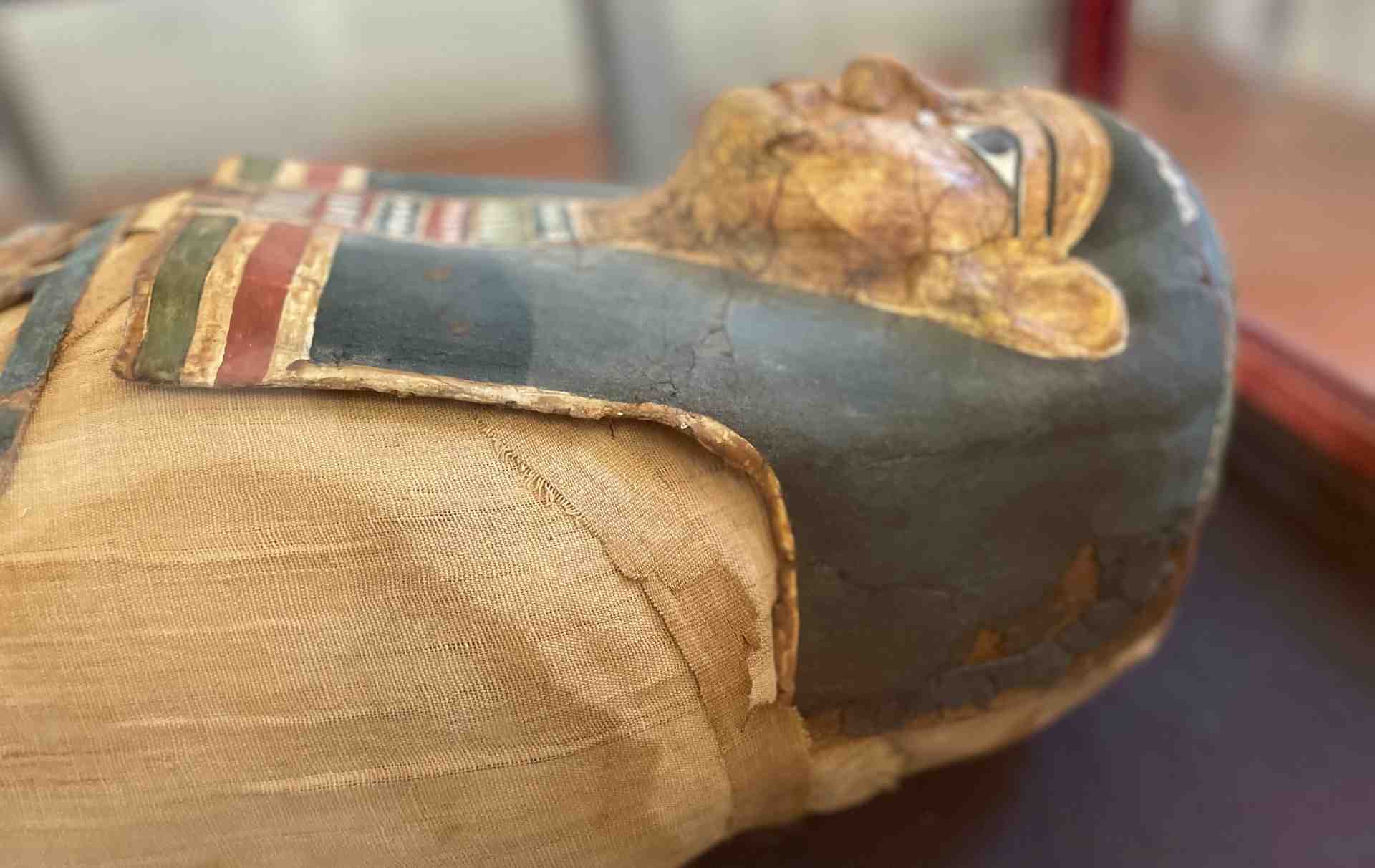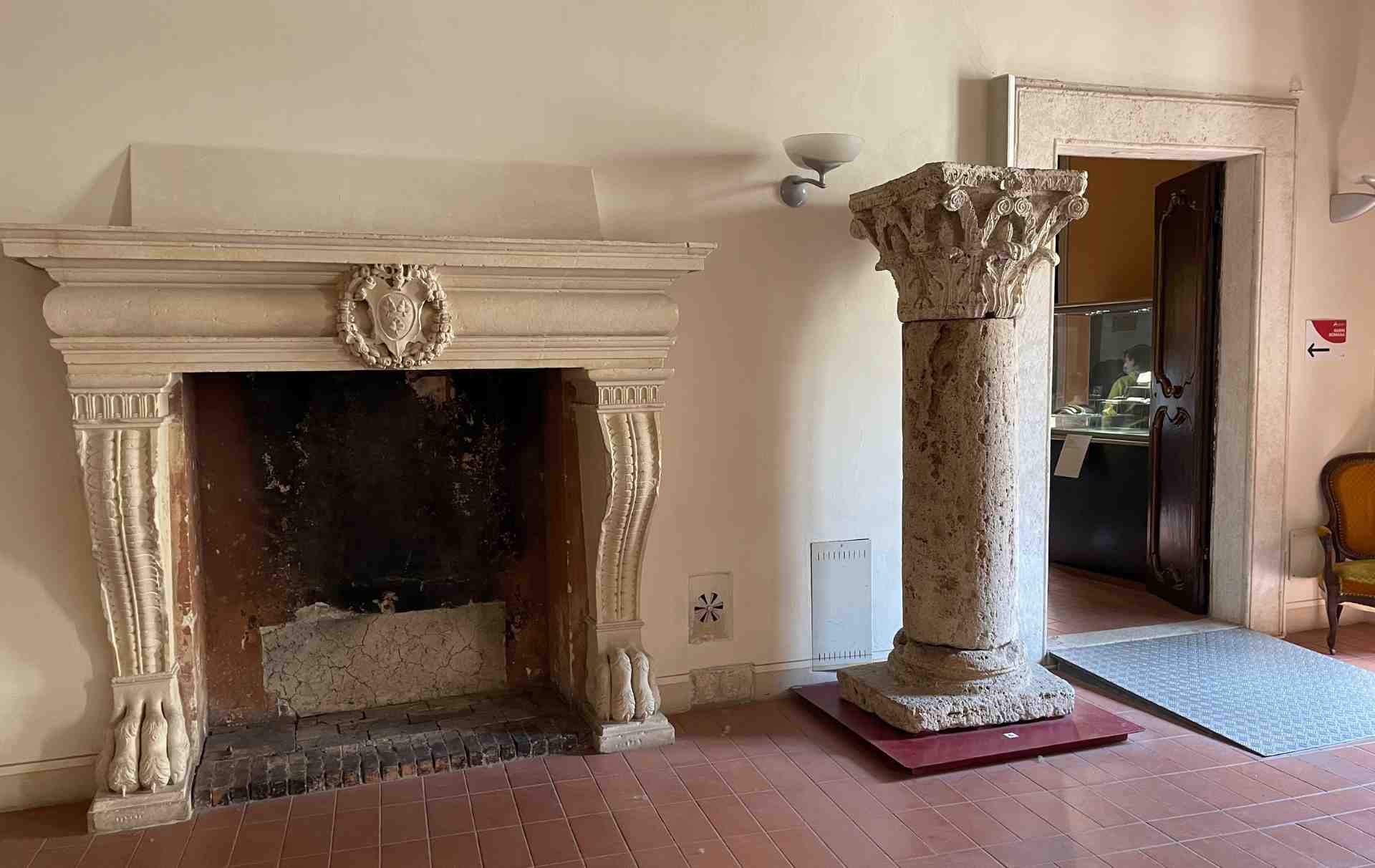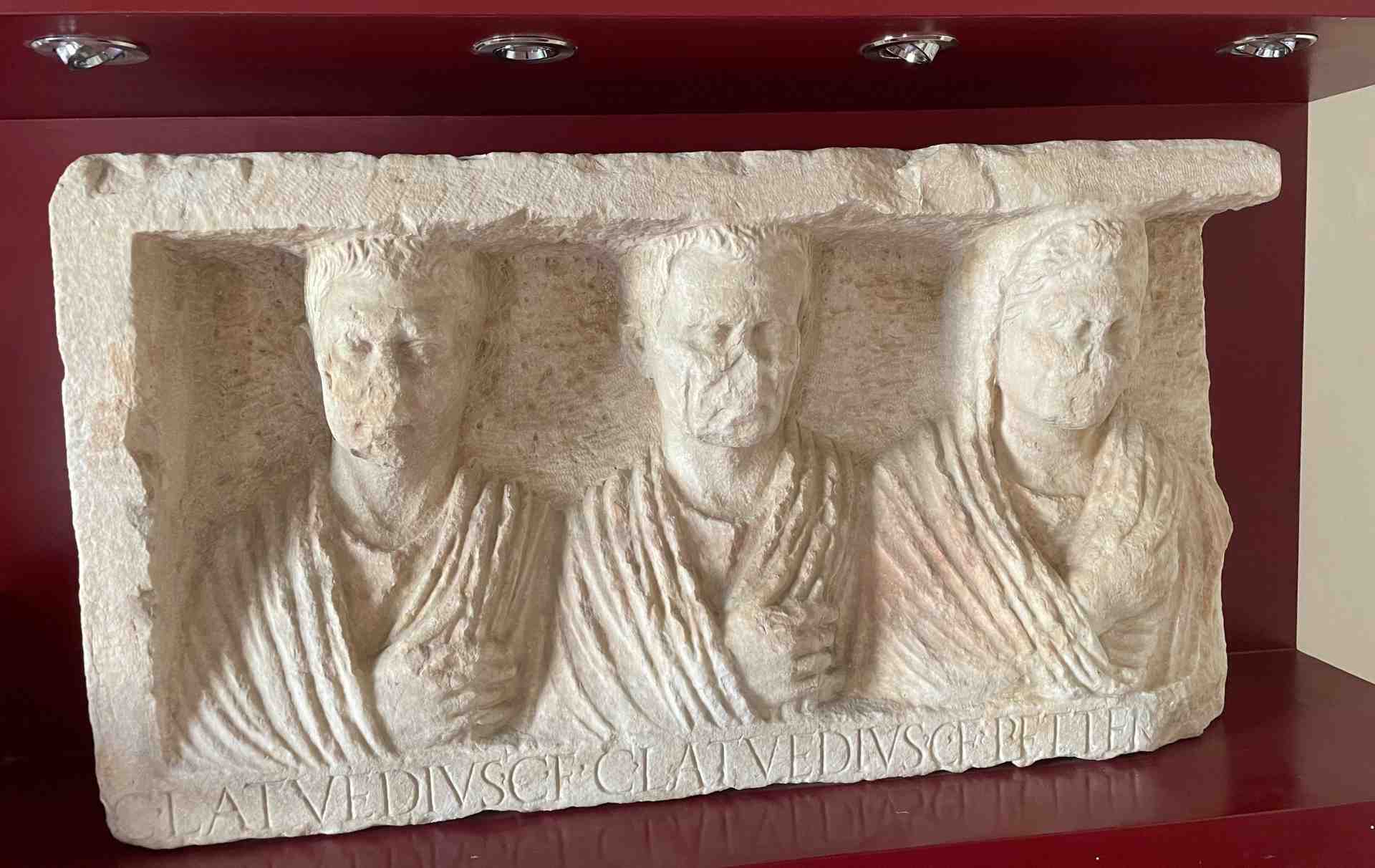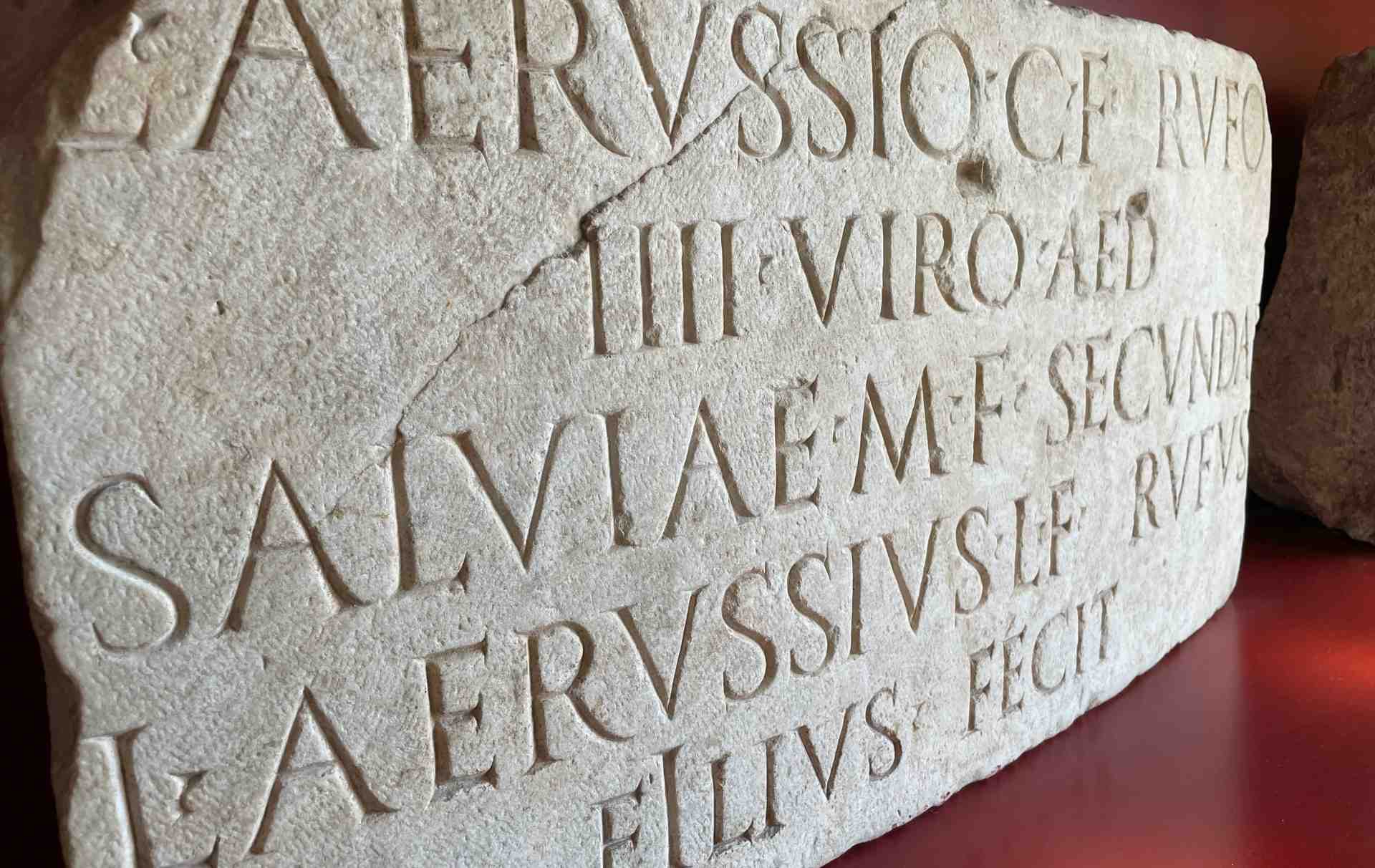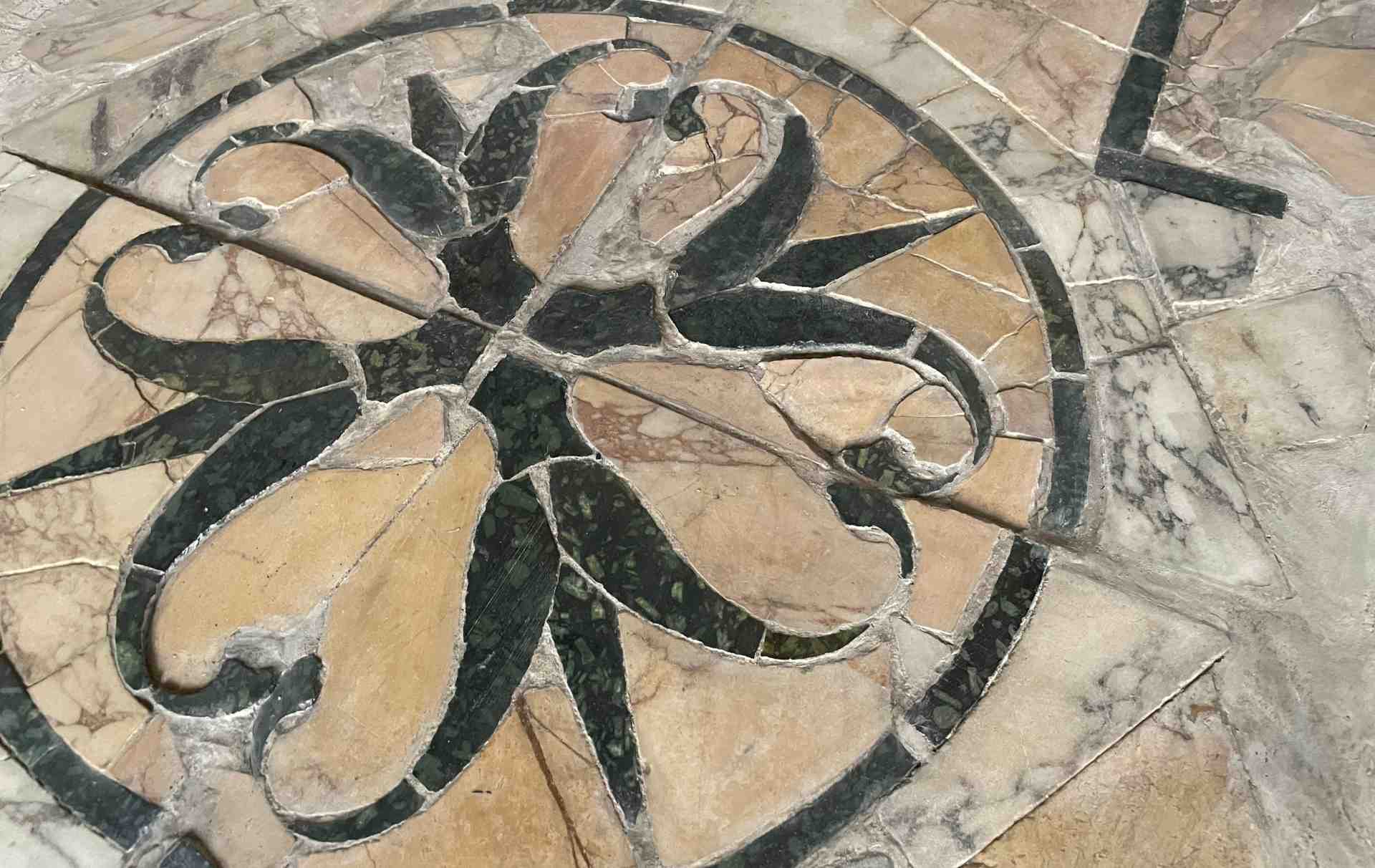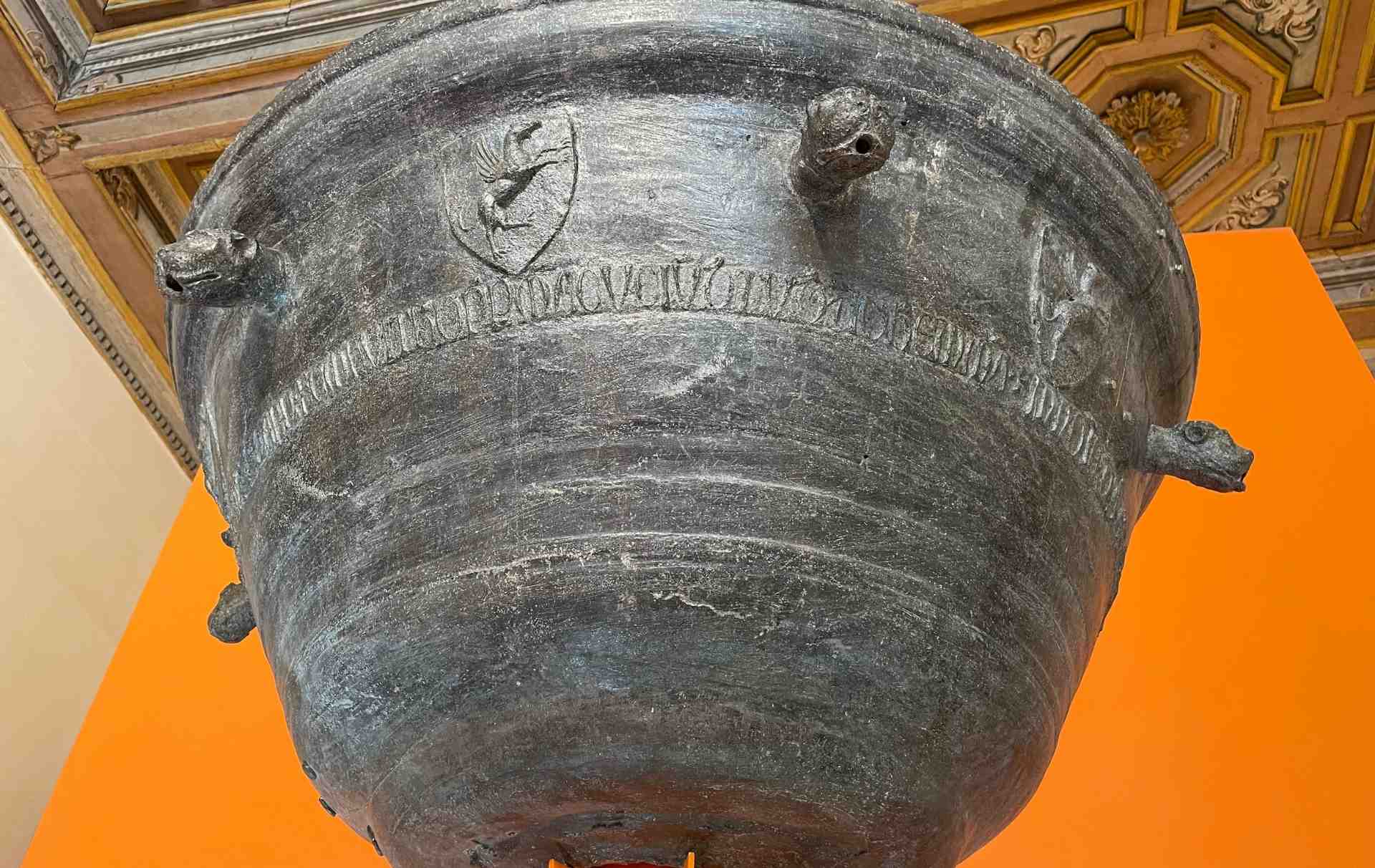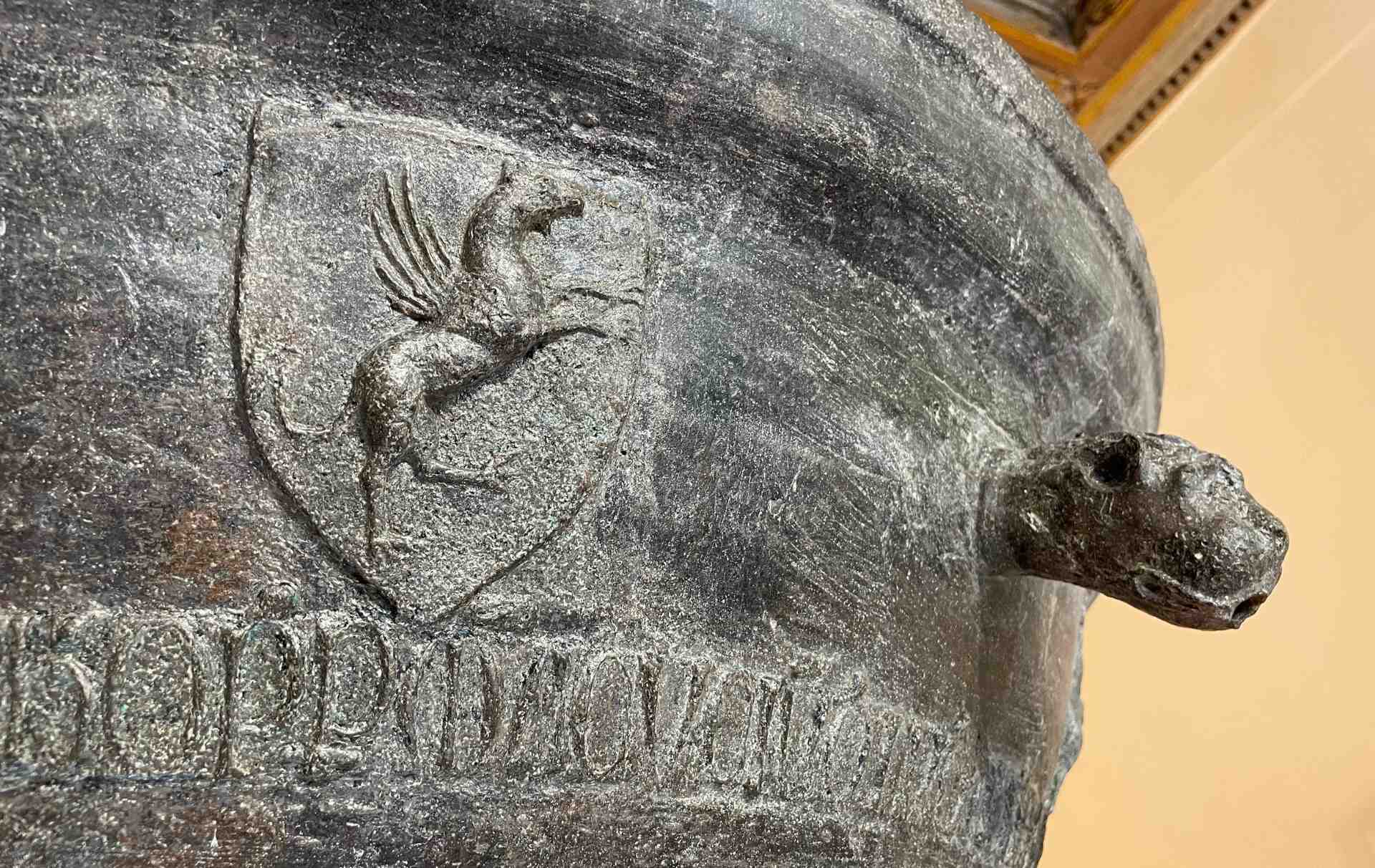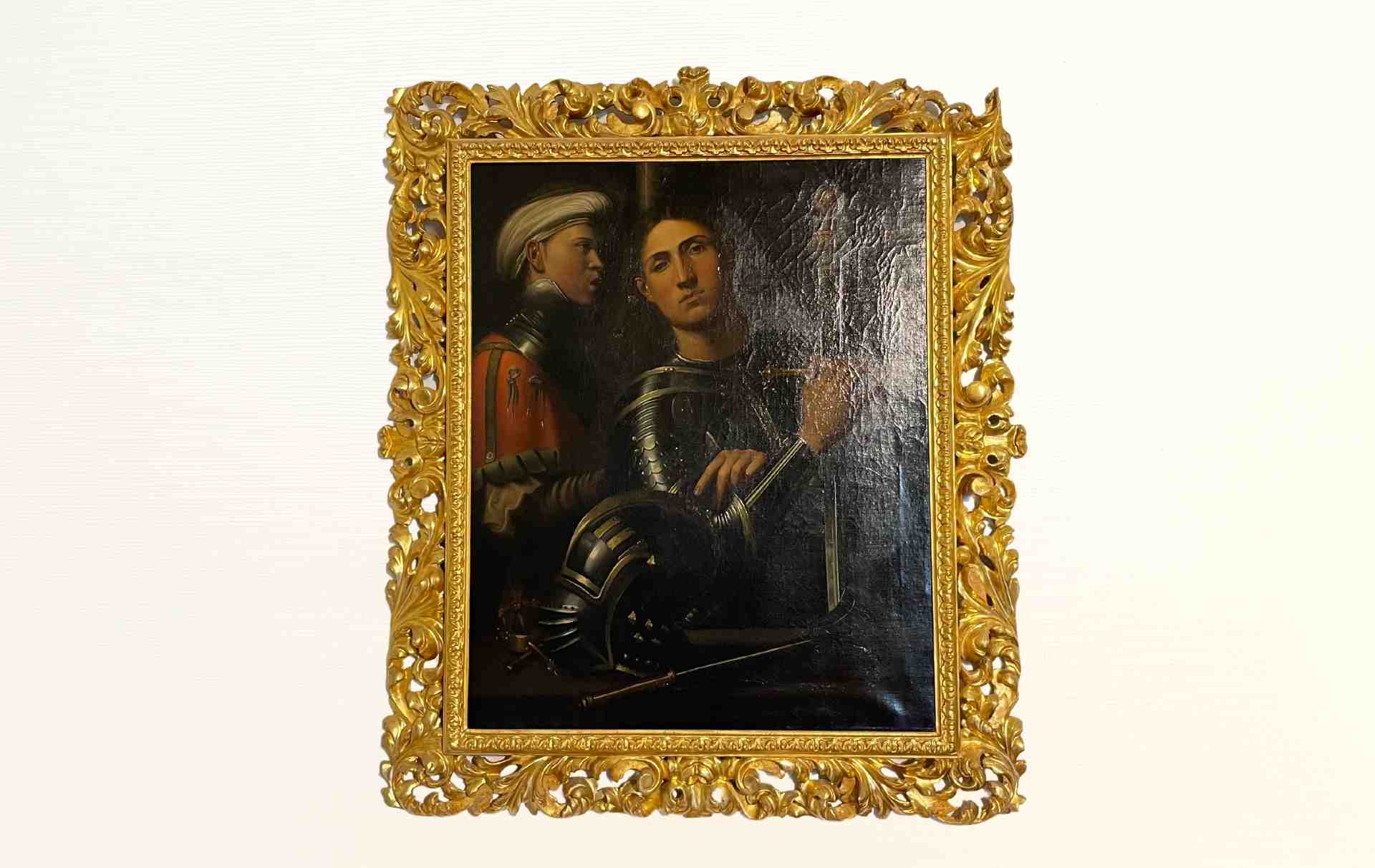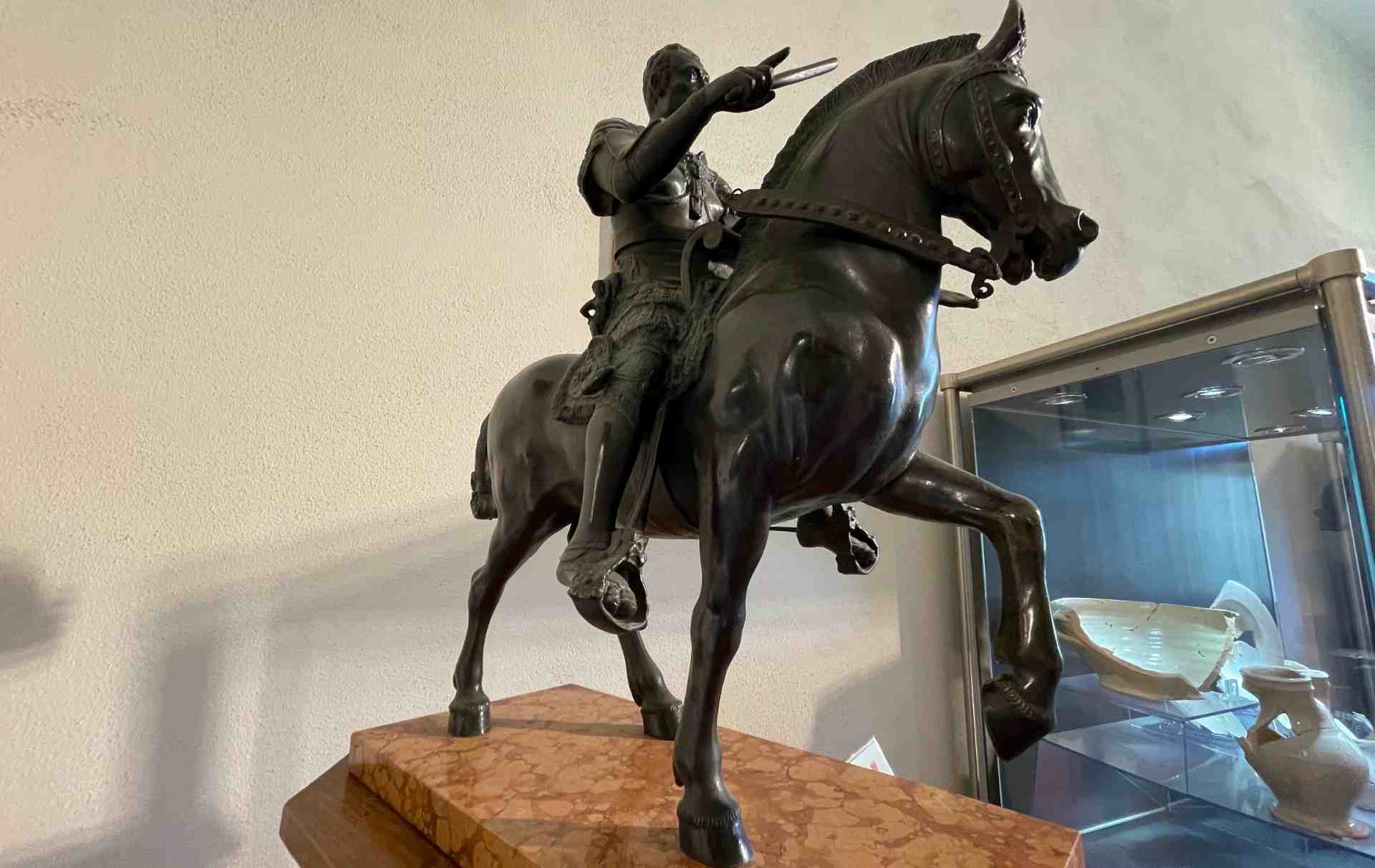The presence of a travertine statue of a lion, once guarding a tomb – late republican, first imperial – welcomes us in the hall of Palazzo Eroli which, on the first floor, preserves the archaeological collection of the museum.
The archeological section of the museum of Narni in Eroli Palace
The museum preserves several remains which, from the prehistoric period until the Middle Age, tells about the history of Narni and of its territory.
Prehistory and Protohistory.
Incredible the tusks of elephas antiquus, found in loc. Molino del Passatore near Taizzano, a progenitor of the mammoth that inhabited the territory 700,000 years ago. In the same locality was found a flint scraper and not far an amygdala.
Ceramics, which go from the Ancient Bronze Age (XXIV sec. a.c.) to that of the Middle Bronze Age (XIV sec. a.c.) found them in the Grotta dei Cocci (Cocci cave) – which it’s placed on the right side of the Nera, in the limestone spur facing the historic center – they attest to a place of worship and the human presence in that place.
The remains of the Grave of Miriano of the VIII-VII century BC, including three spear cusps and a bronze vase, they show us the life before the Romans when Nequinum was the name of the town of the Umbrian people.
The sarcophagus and the Egyptian mummy of Narni.
To enrich the museum, an unexpected remains: a mummy and a wood sarcophagus from Egypt, arrived in Narni thanks to the extravagant personality of Edoardo Martinori, roman engineer and big fan of oriental culture.
The sarcophagus is from the IV century BC , the mummy, which doesn’t belong to the sarcophagus, is of a young woman pregnant of twenty years old, who died of tapeworm caused by raw pork.
The Roman period.
The museum hosts remains of the Umbrian history Nequinum and of the Roman Narnia coming both from the first antiquarium created by the local scholar Giovanni Eroli, and from the excavations on the territory.
Is highlighted, among the others, the relief with funerary inscription I Latuedii in white marble – found in the Vigne location – dating between 40 and 25 BC. Inside of a square frame are represented in high relief the busts of three people: a young man, a man in a robe and a woman in a ball.
Interesting is also an inscription of Augustus age, found on the Via Flaminia near by the Cladaro bridge, which recommends not to dirty marbles and stones during the election campaign.
Splendid the opus sectile floor in a floral geometric draw, with stylized lotus flowers enclosed in circles, which come from a Roman residence in Morellino location.
Interesting are the stamps of the brick factories, the ceramics and many finds that tell the importance of what was a Roman town hall along the Via Flaminia and owned a river port on the Nera near Stifone.
The Medieval period.
The greatness of Narni during the Middle Age is reflected by civil and religious remains which are preserved in the museum.
Considerable the room dedicated to the Bronze cuo of the fountain of Piazza dei Priori with: the study of the work and the novelties of the restorations, from which it is inferred: the date of realization of the 1303; the names of the authors, Marcuccio da Todi and Giovanni di Marco; and, in an inscription in rare uncial character, the names of the Podestà and the six consuls who wanted the construction of the monument and the reorganization of the water system of the city.
Particularly interesting is the room dedicated to Erasmo from Narni called il Gattamelata – born in 1370 near the Porta della Fiera where now there is his birthplace – where it is to deepen the life of the illustrious captain of fortune.
Discover Eroli Palace and the circuit of the museum.
Continue the visit to the Palace:
Go back to the principal page of the Palace:
Eroli Palace
Via Aurelio Saffi, 1, 05030 Narni TR
- from April to October : from Tuesday to Sunday , 10am-7pm
- from November to March : from Tuesday to Sunday , 10am-6pm
(last entrance is 45 minutes before the closing)
MUSEUM TICKET:
– full € 6,00 / reduced € 4,00
NARNIA PASS (Eroli Palace + Rocca Albornoz + self-driving):
– € 9,00
- from April to October:
from Monday to Friday , 9am-7pm
from Saturday to Sunday, 10am-7pm
- from November to March: from Tuesday to Sunday , 10am-7pm
from Monday to Friday, 8.15am-6pm
from Saturday to Sunday, 10am-6pm
It is suggested to park the car into the Suffragio Parking and go up with the elevator until via Garibaldi. Then you can reach piazza dei Priori and via Saffi.
Discover Narni.
Continue to walk with us discovering what to see inside the walls of Narni.
Or discover the points of interest of Narni and of its territory:
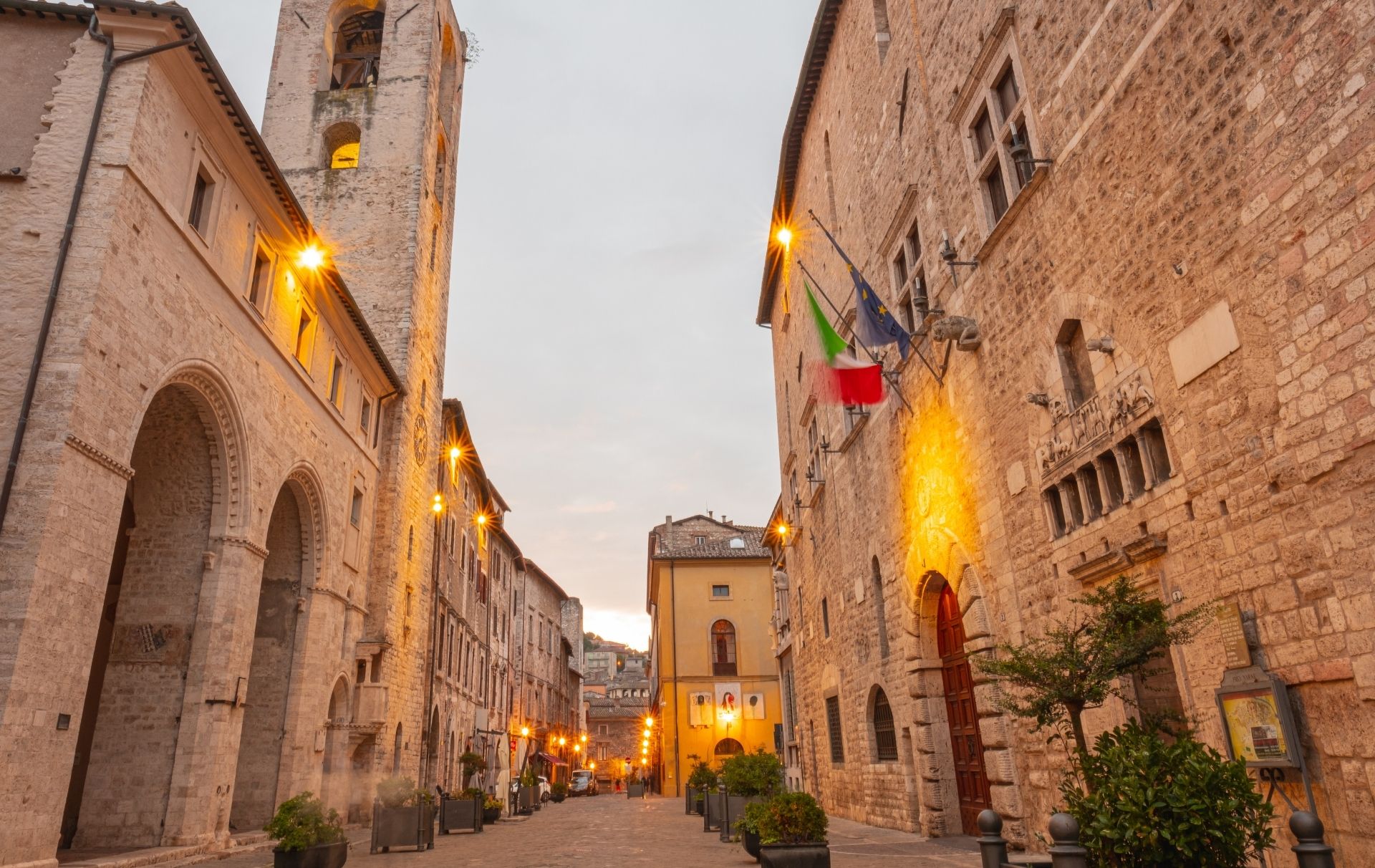
Piazza dei Priori
One of the most beautiful squares in Umbria, Piazza dei Priori – in the past Platea Major – is in the highest part of Narni
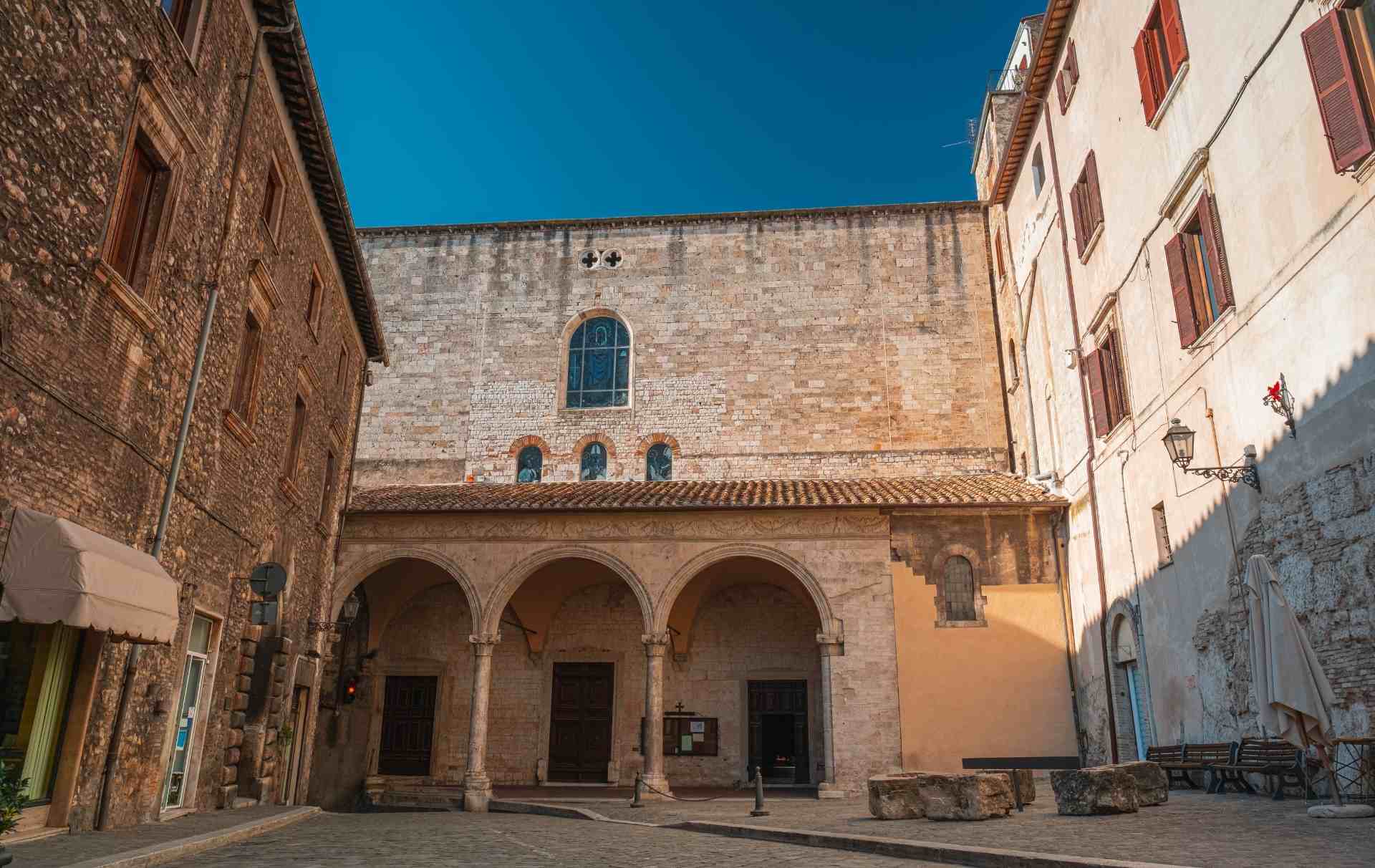
Cathedral of San Giovenale
Devoted to the first bishop of Narni who lived in the IV century BC, the Cathedral of San Giovenale is one of the most artistically,
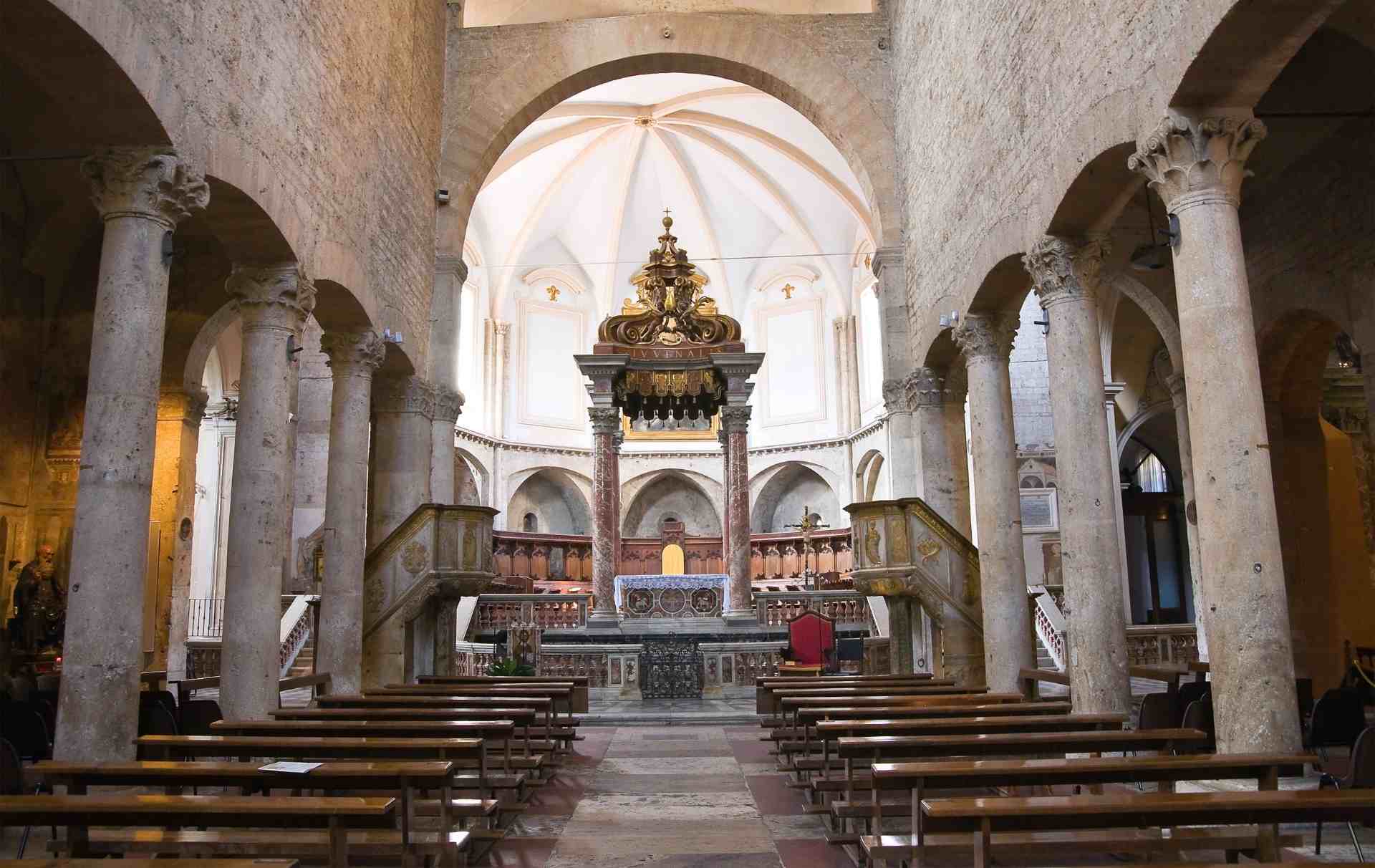
The central aisle
Entering the Cathedral of Narni, from piazza Cavour it’s suggested to go in the center to look at the building in all of its elements:

